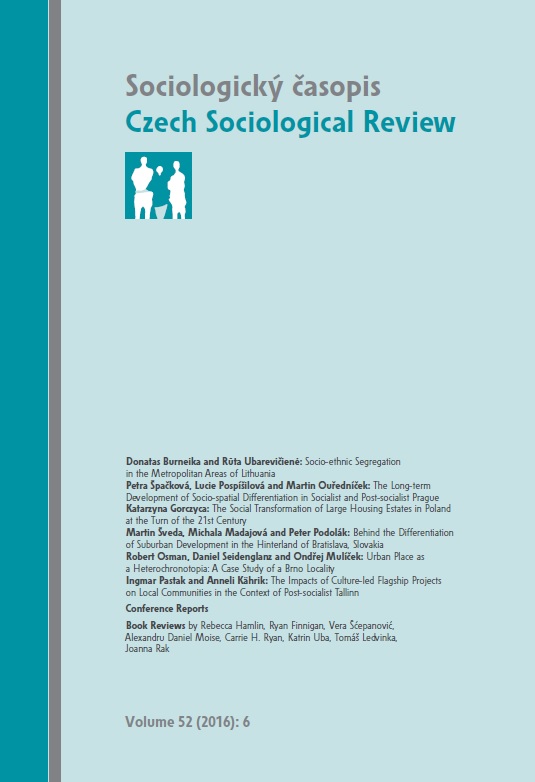Urban Place as a Heterochronotopia: A Case Study of a Brno Locality
Urban Place as a Heterochronotopia: A Case Study of a Brno Locality
Author(s): Robert Osman, Daniel Seidenglanz, Ondřej MulíčekSubject(s): Sociology, Rural and urban sociology
Published by: AV ČR - Akademie věd České republiky - Sociologický ústav
Keywords: place; heterotopia; heterochronia; heterochronotopia; Brno
Summary/Abstract: This article is based on long-term study of the relationship between time and space. It does not conceive space as a dimensionless, empty, and homogeneous container but draws instead on the concept of place as unique and meaningful. The conceptualisation of place is thus based on the classic works of the humanist geographers Yi-Fu Tuan and Edward Relph, who consider place to be integral, enclosed, and determinable. The issue of the determinability of integral and still meaningful place is examined using Michel Foucault’s concept of heterotopia. A certain place in a city is linked to a number of other places, which in a way then become present in that place. The place cannot be considered a homotopia but, on the contrary, is a heterotopia. Place can also be conceived from a temporal point of view. Various times (rhythms) blend in a place and they refer to processes that were taking place in other (even temporally very remote) times. Similarly, just as place can be spatially considered a heterotopia, temporally it may be considered a heterochronia. The term heterochronotopia is used to refer to a place that opens out both spatially to other places and temporally to other times. Empirically the article focuses on one selected place in the post-socialist and post-industrial city of Brno (Czech Republic). The article seeks to (1) identify links connecting the researched place to other sites and times and to (2) describe the selected place as a system of associations. The research combines a very wide range of methods such as direct observation, informal interviews, and analyses of historical documents, photos, public transport timetables, etc. The article thus offers an example of a dense description of a place as a temporally or spatially undeterminable entity, provides material for critical reflection on the assumption that urban place is enclosed and determinable, and introduces ‘heterochronotopia’ as a new concept referring to a spatially and temporally undetermined place in a contemporary city.
Journal: Sociologický časopis / Czech Sociological Review
- Issue Year: 52/2016
- Issue No: 06
- Page Range: 927-962
- Page Count: 36
- Language: English

